Trout
{{start}}
These articles are predominately related to fishing for trout.
{{end}}
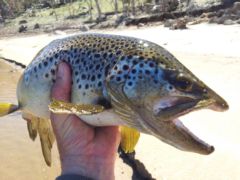
{{+1}}Lakes – polaroiding tips{{-1}}
{{start}}
For me polaroiding is one of the most rewarding forms of fly fishing. It involves the process of sighting fish with the aid of polaroid sunglasses and then working out and executing a when, where, what and how equation with the aim of enticing the sighted fish to take the fly. I like it because it puts me in environments that I enjoy and it's a real challenge of my stealth and cunning. I guess to the uninitiated this all sounds pretty corny, well perhaps it is, but don't knock it until you have tried it and had some success with it.{{end}}
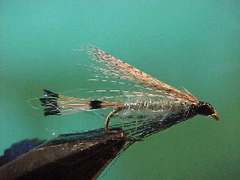
{{+1}}Blue & teal variant{{-1}}
{{start}}
A variant of a old English wet fly this variant is in the same class as an Alexandra this fly as an attractor fly particularly when rainbows are the target. It is different to the original in that the dyed blue hackle has been replaced by blue barbells from the chest feathers of a male peacock and the body is "Glamor" thread fuzzeled with silver UV dubbing.{{end}}
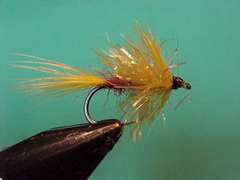
{{+1}}Fat boy – Chatto’s original{{-1}}
{{start}}
This is a "Blob with attitude" and because it actually looks like a fly I find it a a little easier to tie on than its very basic second cousins. It has a place in my fly box because from time to time, and particularly in competition fly fishing, you find yourself fishing in the most unpleasant conditions. In situations like that a blob with attitude may save the day.{{end}}
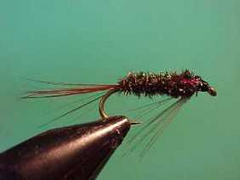
{{+1}}Diawl bach{{-1}}
{{start}}
I normally fish smaller sizes as a midge pupa and from time to time use larger sizes as a point fly in a team of wet flies on a floating or intermediate line. I tie it both with and without weight and find the addition of a small black tungsten bead makes it a handy anchor fly or a good prospecting fly in running water.{{end}}
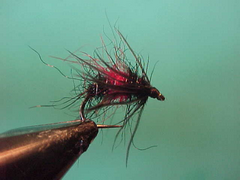
{{+1}}Bibio variant{{-1}}
{{start}}
Whilst the Bibio fly may have been originally designed as a blow fly representation it has found its place as a great top dropper fly in lakes where fish are midge feeders. That of course begs the question do fish take them as midges, or do they take them as some other insect more like a fly, but which spends part of its life cycle in the water, that just happens to hatch as the same time as a midge?{{end}}
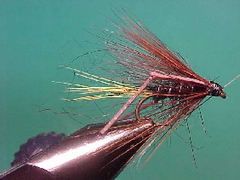
{{+1}}Leggy wake flies – Chatto’s variant{{-1}}
{{start}}
The beauty of this fly is that once tied with legs if on the day if you decide you want a fly without kegs its easy to snip the legs off. It's also versatile enough, witha little dry fly dressing, to be dry fly. My favourite dressings are blae and black, mallard and claret, green peter and Kate McLaren.{{end}}

{{+1}}Kalkite special{{-1}}
{{start}}
This fly has stood the test of time and has been on this web site since 2005. Over the last 10 or so years it has been my 'go to' fly when fishing to sighted fish or prospecting the shores of Lake Jindabyne particularly around our home village of Kalkite.{{end}}

{{+1}}Floating yabby / crayfish{{-1}}
{{start}}
A floating yabby is a bit of an oxymoron but it does work. Fish it on a fast sink line and let the line sink to the required depth. When you pull the line the floating yabby will be pulled down. When you pause the yabby will rise. Bass love it.{{end}}
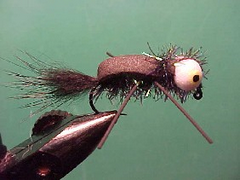
{{+1}}Booby beetle – Chatto’s original{{-1}}
{{start}}
Boobies are a fantastic bass fly when fished on the surface but occasionally they hang so low in the water they get a bit hard for me to see. To overcome that when seeing the fly is necessary I added a back of 2mm closed cell foam - works like a dream. This is undoubtedly my favorite bass fly.{{end}}
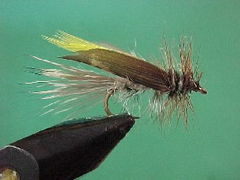
{{+1}}Chatto’s yellow winged hopper{{-1}}
{{start}}
As the name implies this hopper is my representation of the natural of the same name. Its tied in the same way as a stimulator except that a yellow under wing and feather slip wings replace the deer hair wing of the stimulator. It's a good hopper pattern to tie on because it floats in the surface film much the same way as the unfortunate natural does and it is reasonably visible.{{end}}













